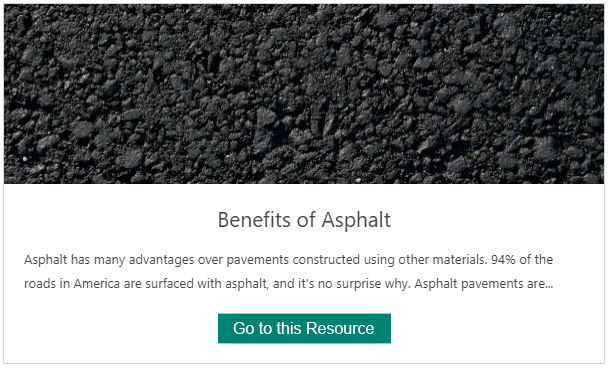Some Known Details About A1 Professional Asphalt & Sealing Llc
Some Known Details About A1 Professional Asphalt & Sealing Llc
Blog Article
A1 Professional Asphalt & Sealing Llc - The Facts
Table of ContentsThe Definitive Guide to A1 Professional Asphalt & Sealing LlcSome Known Questions About A1 Professional Asphalt & Sealing Llc.A1 Professional Asphalt & Sealing Llc - TruthsThe Ultimate Guide To A1 Professional Asphalt & Sealing LlcThe 30-Second Trick For A1 Professional Asphalt & Sealing Llc

The oil in a car engine is not simply oil. It includes a selection of ingredients to enhance the lorry's performance. These consist of polymers, viscosity modifiers, warmth stabilizers, additional lubricating substances, and put on ingredients. The REOB includes all the ingredients that were in the waste oil along with the wear metals from the engine (mostly iron and copper).
Nevertheless, by making numerous blends utilizing various REOB examples and different asphalt binders, the variations mostly can be balanced out. Numerous States supplied samples of known REOB structure to TFHRC researchers, that examined the examples to contrast the percent of included (recognized) REOB to the found (tested) amount. The analyses showed a similar portion of added and discovered REOB.
How A1 Professional Asphalt & Sealing Llc can Save You Time, Stress, and Money.
None of those States realized that the asphalt they were acquiring consisted of REOB. One State insisted its examples had no REOB - https://linktr.ee/a1asphaltseal.
Of the 1,532 examples checked, 12 percent included REOB, and some included appreciably high levels of it at 1020 percent. The highest degree was 34 percent in a sample from Texas, which TxDOT had used in a patching substance. This testing also disclosed the visibility of phosphoric acid in 11 percent of the samples, and 2 percent contained ground tire rubber.
2 years earlier at TRB's yearly meeting, the Federal researchers held an REOB workshop and offered the findings of their laboratory evaluations to a standing room-only group. Some agencies do not especially ban REOB, they do enforce physical tests that prevent its useeffectively a ban. Others do not prohibit it by specification, however have agreements with asphalt vendors to avoid using REOB
Getting My A1 Professional Asphalt & Sealing Llc To Work
A handful do permit REOB, some within certain limitations. Ohio and Texas restriction levels to less than 5 percent of the asphalt. To develop a trusted test method that all States can use, the TFHRC researchers set up a round-robin test strategy. The individuals are 11 State freeway companies (Illinois, Massachusetts, Minnesota, Mississippi, Montana, North Carolina, Oklahoma, South Carolina, Texas, Vermont, and Wyoming), 2 independent screening laboratories, the Ministry of Transportation in Ontario, Queen's College in Ontario, and an Ontario paving service provider.
In total amount, the scientists prepared and delivered 720 blends. The participants are evaluating the samples independently utilizing the standards given by the TFHRC scientists. The round-robin screening is almost completed, and TFHRC is in the procedure of accumulating the outcomes. The outcome will be a proposed AASHTO test approach that any kind of State can embrace and utilize (a1 professional).
The pavement with REOB, which lies 0.6 mile (1 kilometer) from the pavement without REOB, has the same subgrade, web traffic density, and environment. Nevertheless, the section of Highway655 with 5 to 10 percent REOB revealed significant breaking. In this example, the presence of REOB was the determined source of fracturing at a low temperature levels.
An area of test pavement in Minnesota (MN1-4) located to contain REOB likewise cracked too soon. The sidewalk performed well for the very first 3 to 4 years, yet after that started to split.
Little Known Facts About A1 Professional Asphalt & Sealing Llc.
The examinations were not comprehensive, however they showed that at levels of 6 percent or more, the tensile strength of the asphalt went down considerably. At a level of 3.5 percent REOB, the variation in the physical examination approaches was higher than the result of REOB. As a matter of Resources fact, it was difficult for researchers to analyze whether REOB existed.

One binder specification taken into consideration is the distinction between the low temperature crucial specification temperature for stiffness (S) in the flexing light beam rheometer and the flexing beam of light rheometer creep slope (m-value) noted as Tcritical. TC = TC (S) TC (m-value). Evaluation of this criterion is still recurring. Two independent study groups, one from AASHTO and the various other from the Asphalt Institute, wrapped up that more study is required on the use of REOB in asphalt.
Previously, all asphalt screening determined design properties such as tightness. These tests do disappoint what materials had actually been included in the asphalt. One example received throughout the TFHRC study had a really unusual evaluation. The sample had the adhering to test outcomes: Superpave PG 64-28 with a heat quality of 67.3 Tcritical on the bending light beam rheometer was 6.7 degrees Celsius.

The A1 Professional Asphalt & Sealing Llc Ideas
These outcomes demonstrate there are weaknesses in the standardized design screening procedures that may be exploited. The manufacturer might have an economic benefit and the item passes all the standard tests, but the item may not be helpful to making sure long-lasting performance. To resolve this problem and the expansion of new asphalt ingredients and extenders, TFHRC is starting a research program to make use of handheld spectroscopic devices, x-ray fluorescence spectroscopy, and Fourier change infrared spectroscopy to allow analyses to be carried out in the field as opposed to needing to take samples back to the laboratory.
Report this page